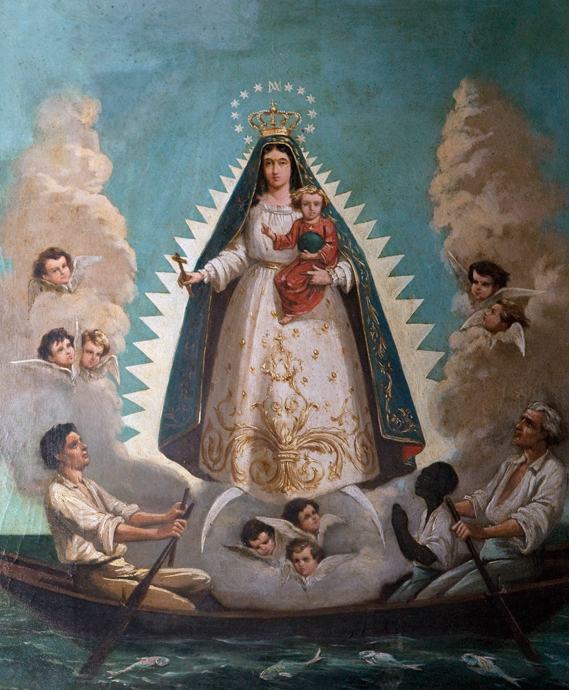
Our Lady of Charity, also known as Our Lady of Cobre, is the patroness of Cuba.
The story about how the image became Cuba’s patroness dates back to the early 17th century, when two brothers, Rodrigo and Juan de Hoyos, and their slave, Juan Moreno, set out to the Bay of Nipe in Cuba for salt. They are traditionally called the “three Juans.” They needed the salt for the preservation of the meat at the Barajagua slaughter house, which supplied the workers and inhabitants of Santiago del Prado, now known as El Cobre.
While out in the bay, a storm arose, rocking their tiny boat violently with ongoing waves. Juan, the slave, was wearing a medal with the image of the Virgin Mary. The three men began to pray for her protection.
Suddenly, the skies cleared, and the storm was gone. In the distance, they saw a strange object floating in the water. They rowed toward it as the waves brought it toward them.
At first they mistook it for a bird, but quickly saw that it was what seemed to be a statue of a girl. At last they were able to determine that it was a statue of the Virgin Mary holding the child Jesus on her right arm and holding a gold cross in her left hand. The statue was fastened to a board with an inscription saying “Yo Soy la Virgen de la Caridad” or “I am the Virgin of Charity.”
The image was dressed with real cloth and the Virgin had real hair and the skin of a woman. Much to their surprise, the statue remained completely dry while afloat in the water.
